3.24.2014 – Monday
There has been little doubt that these past few months have been Winter. Little chance of mistaking it for any other season. Records are adding up and it’s reasonable to say that it has been consistently cold. The silver lining has been the lake ice of Lake Superior. More ice means the liquid water is locked away and we have more sun and fewer lake-effect snow showers.
2014 data from NWS Marquette:
- February averaged 5.6°F
- 78 consecutive days were below freezing
- 5 days this winter the high was below zero
- 20 days in February had a low below 0°F
- -28°F was recorded on 2/28/2014
The off-grid tech we have in the un-heated garage faired quite well this winter. As a result, I think we can endure future winters without much worry. Despite the cold, the lowest recorded temperature at the battery terminal (where the sensor is bolted on) was still in the twenties. The garage is fairly well insulated and the generator exhaust vent gets closed off when we depart – sealing up the garage quite well. An interesting observation the Ol’man and I noted was that the exhaust fans for the generator (two 100 cubic-feet per minute 110V muffin fans) were not working as efficiently as hoped. The solution was to crack the service door just a bit to let fresh air in to displace the air vented by the fans. The garage is very tight with doors shut and windows latched.
Before departing we like to make sure the batteries have a charge somewhere between 85-100% in the winter months. After some data mining I assembled the table and drew up the graph in this document: Freezing Point Depression. Below is the graph.
The document was my effort to determine what it would take to damage our battery bank. The short answer is that it is almost impossible to freeze-damage our batteries given the lowest observed temperature in the garage.
We charge up to 85% or more before departure because of the lake-effect skies. It may take 10 days for our panels to collect 100 Ah in winter. The 12V LED lighting requires about 30 Ah (at 12V DC) to operate each day. In 10 days without sun (not an uncommon event) we’d find our battery bank down 300 Ah! The battery bank is rated at 1540Ah at 80°F. Ever wonder why batteries get ratings at specific temperatures? I recorded some data from our battery bank (via amp-meter and specific gravity) and found that at 30°F the batteries are down to roughly 50% of the 80°F rated capacity! The reaction required to transform chemical energy to electrical energy gets inefficient as the temperature drops. In deep winter, 300 Ah becomes 40% or more of the battery bank capacity.
My data set only has three samples and it would be nice to get another point below freezing. However, given how well this graph has aligned with casual observation, I’m not too enthusiastic about drawing up below-freezing electrolyte in a glass bulb for an additional dot on a graph.
While cold batteries may last longer, warm ones sure work better. If you happen to be in the process of deciding where to place batteries in an off-grid system, hopefully I’ve given you some useful information. To finish up, here are a few parting shots of winter. Despite the cold I enjoyed winter this year and the lake ice made for some fun family outings. None-the-less, I’m happy to move on to maple tapping.

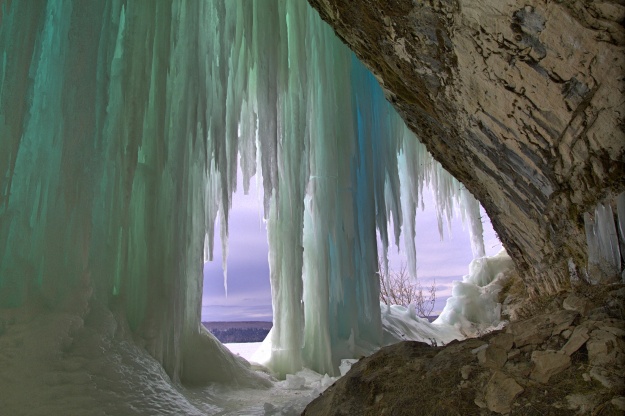
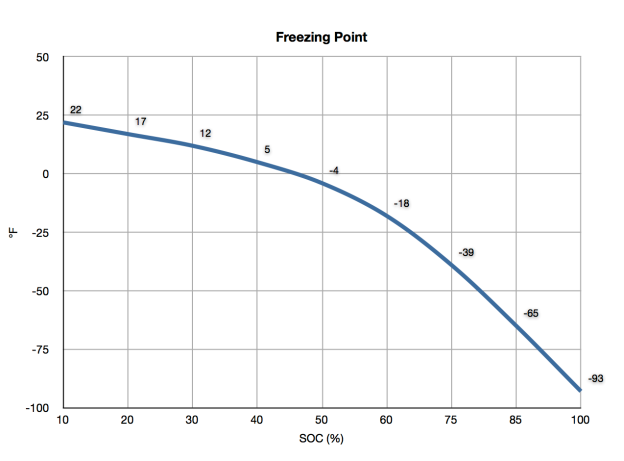
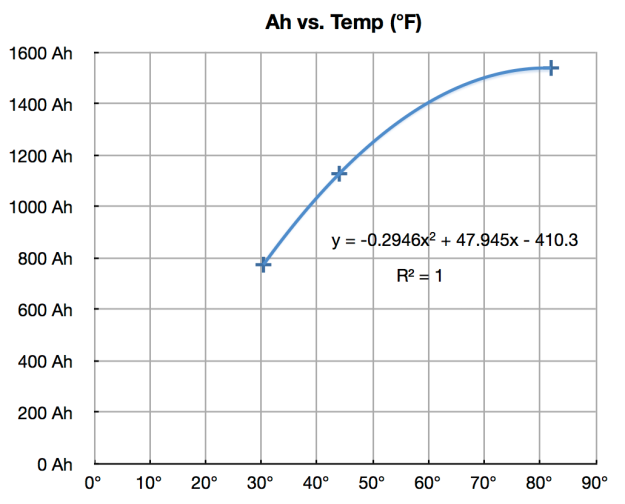
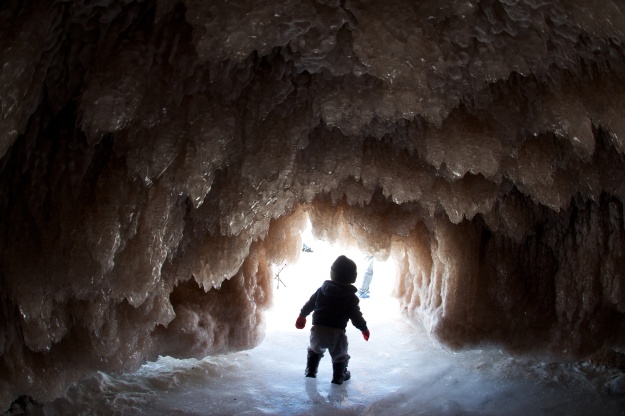
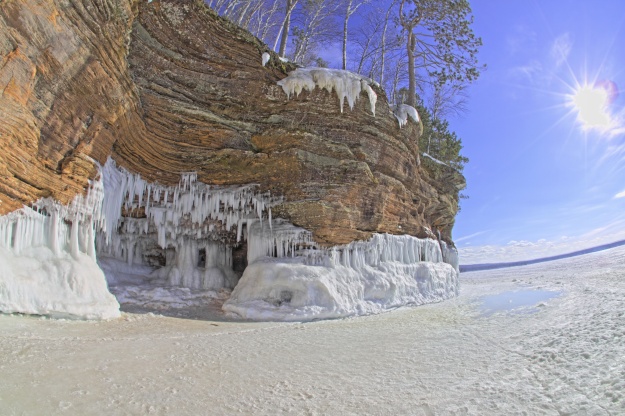
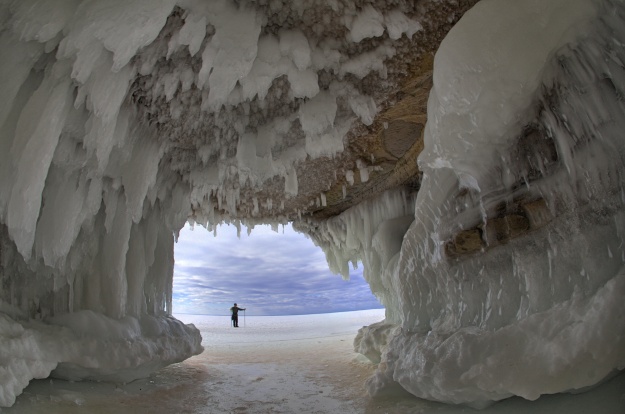
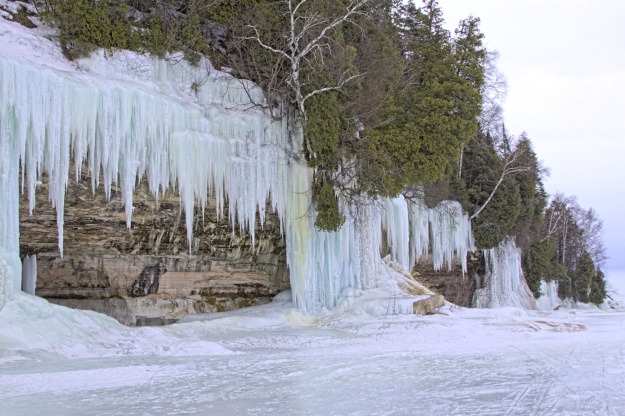
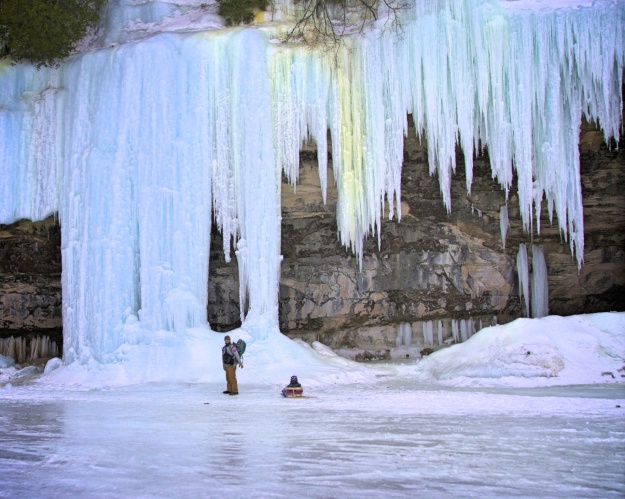
Looking at the aprox date of your set up 2009-20010. with the date codes on the batts as 2009 that makes your batts roughly into there 4th year on a 12 volt system. I have not seen any mention of a once or twice a year rotation of your batts…Most guys I know usually rotate there batts around on multiple parallel string systems once a year, ofcourse some never do. Not a concern for you?
I too am at 12 volts, 1100 amp/hrs, but with panel prices so low now I have gone up to over 2000 watts. Have you thought of adding more panels? or have you found what you have suficient? You are one of the last I have read about setting up with 12 volts, most going to 24 volts or greater now, Just want to say welcome to the 12 volt club, there is still lots of us around (most with grey hair now) and doing well on it, despite those who dismiss 12 volts. I also use the C60, reliable and if needed repairable with comon fets for the control elements and no surface mount components.
I didn’t actually know about rotating batteries until you mentioned it. I’ll take SG readings again this Spring to check up on the general health of the batteries but so far the way I have them wired has kept things remarkably even (now watch… I’ll check this Spring and everything will be a mess). The cables from the buss bars are about the same length and with the buss bars I’m not sure rotating would have much effect. Adding panels has so far only been a mental exercise with little seriousness given to investing in more infrastructure. We have adequate power in summer to run lights and appliances and enough power in winter to maintain a charge with our 12V lighting. The generator rarely gets run in summer. Extra panels in winter would likely not make much difference given the lake-effect skies we have from November to February. And then there is the issue of where to put the additional panels. We’re content with the current set up. Maybe in another 20-30 years (I’m an optimist) once stuff starts to break I’ll revisit the idea of modifying the system.
Good to hear its working well for you, thats been my experience on 12 volts as well, lots of comments on the “solar sites” about how bad it is or hard to work with, but myself, and others just seem to do fine running the whole house on it. I often suspect operator issues but you never know, maybe a bad new component knocks things sideways and the voltage is blamed.
Forgot about your location, been down that way so I understand about lake effect snow, lt can be bad, not a problem in northern Alberta. In your area you may be better off with a wind turbine when/if you ever need more power. I can recommend the other power style, had mine up for 5 years then this winter I had the bearings go. replaced both bearings and was up and going in about 1.5 hours, total cost 30.00 dollars for two sets of bearings with outer raceways included….this is off topic but when I called the bearing supply stores I asked for bearings made in north America
I was told none available…Chinese…Japanese…German…didnt believe them because I was sure Timken was NA so I googled it and sure enough only a office, last bering manufacturer has gone to China….well its not like there important for anything I quess!…